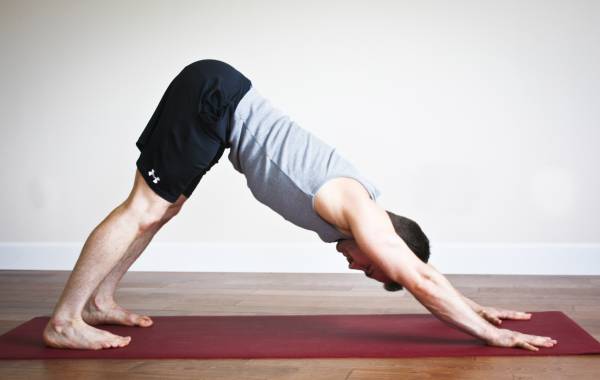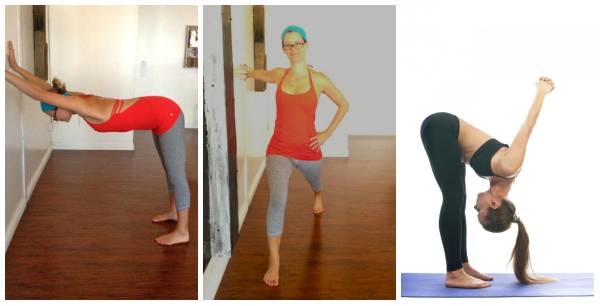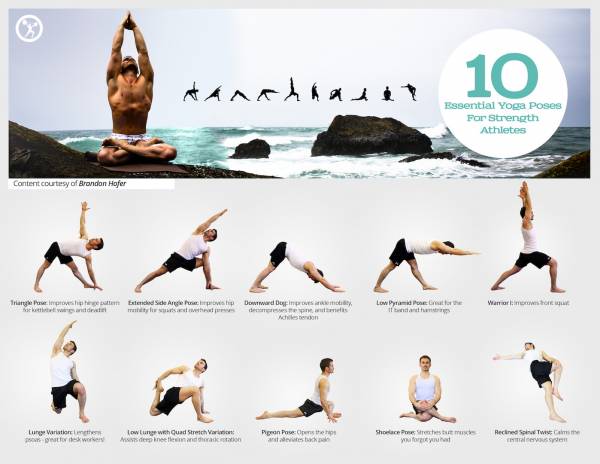If you’re not already convinced yoga might be a good addition to your training program, consider this nugget of evidence from Sports Illustrated:
If you’re not already convinced yoga might be a good addition to your training program, consider this nugget of evidence from Sports Illustrated:
Over the past decade, more and more NBA players -and pro athletes from all sports – have taken up yoga and, more tellingly, discussed openly how important the practice is to their game. Most notable among NBA yogis is LeBron James, who recently credited an early-morning class for his ability to beat cramps in Game 2 of the NBA Finals against the Spurs. The league’s all-time minutes leader, Kareem Abdul-Jabbar, is also outspoken about his zeal for yoga, saying it was a big reason he was able to play as long and successfully as he did. In addition, Kevin Love, Dwayne Wade, Kevin Durant, and Kevin Garnett are all open about their yoga practice and have frequently spoken about its benefits for basketball.
The author goes on to discuss the use of yoga for enhanced athletic performance in NFL and NHL athletes. If the pros are seeing yoga’s benefits, chances are everyone would get a good boost in performance by adding a little downward dog into their routine.
Yoga’s Not My Thing
When I was first introduced to yoga, I was a little skeptical. My yoga-newbie friend kept gushing about how much better she felt since starting a regular yoga practice and to be honest, it was a little annoying. Plus, I thought, isn’t yoga for people who are stressed out? Don’t you have to light incense and chant and abstain from deodorant?
Since then I’ve learned yoga has much more to offer, in part because it’s so applicable to a wide range of needs and goals. Coach Eric C. Stevens hit the nail on the head when he described what yoga can teach you, regardless of your background:
Yoga, I can say, without equivocation is for everyone. Not that it’s everyone’s preference, but it offers something for everyone.
Yoga does so because it brings front and center the principle of balance. The manifestation of what occurs in the physical movement of our bodies, as I have learned in the martial arts and boxing over the years, occurs through balance. Balance means the fusion between our energies – male and female, internal and external, our inner body and breath and how we move our external form. Yoga, like the martial arts, teaches you both internally and externally.
Another appeal that yoga has is that it challenges us in a different way than intense activities like running, powerlifting, and boxing. Yoga forces me to find acceptance in the discomfort of stillness.
Read Eric’s tips for establishing a yoga practice in his article, Why a Non-Yoga, Non-Hippie Guy Thinks You Should Do Yoga.

Why Athletes Need Yoga
You might be thinking to yourself, “Stillness? Acceptance? Balance? That’s boring.” If that’s the case, I challenge you to be still in crow pose or even downward dog for a good length of time. Yoga can test your body and push it to its limit, all while fostering intentional breath and mental focus and stillness. It’s a triple-edged sword.
Yoga fosters balance because it is itself a balanced practice, allowing you to achieve a wide range of athletic goals – mobility, strength, flexibility – at the same time. And if you’re an athlete, yoga can bring a new balance to your training by helping you prevent injuries, as yoga instructor and athlete Julie Rader noted:
Yoga is also important for injury prevention. When I hear about athletes with groin, hamstring, or Achilles tendon injuries, I always wonder if it could’ve been prevented with a consistent yoga practice. Of course, there are some injuries such as ACL tears and concussions that yoga won’t prevent. But the hips, hamstrings, and calf muscles, and in some sports the shoulders, are taxed heavily during training and repetitive movement. Without stretching and lengthening these muscle groups, injuries are bound to occur over time.
Read more about the benefits of yoga for athletes in Julie’s article, Integrating Yoga for Athletes: What Athletes Really Need.
Yoga can also provide benefits for specific exercises and activities. With the right combination of poses, you can create flows to target muscle groups and skills that are specific to your sport. Here are just a few of the sequences we’ve covered in articles and videos:
Yoga Sequence for Runners
If you’re a runner, add this sequence from yoga expert Mindith Rahmat‘s article, 5 Essential Yoga Poses for Runners, into your running routine:
Use this sequence to open the calves, quadriceps, hamstrings, iliotibial band, and hip flexors. Practice these poses after your workout or run. Your body should be slightly warm before you go deep in a yoga pose. Stay in each pose for 10-15 breaths.
- Downward-Facing Dog
- Seated Pigeon Pose
- Crescent Lunge
- Standing Forward Bend
- Pigeon Pose

For more information on how yoga can improve your running, don’t miss the articles 3 Pain-Relieving Yoga Poses for Distance Runners by yoga instructor Bethany Eanes and 25 Yoga Poses That Will Make You a Better Runner, by yogi and runner Willow Ryan.
Yoga Sequence for Overhead Mobility
Feeling stuck in your overhead squat progress? Yoga can work wonders for overhead mobility. Yoga instructor and athlete Bethany Eanes outlined three key poses to do before overhead work in her article, 3 Yoga Poses to Increase Overhead Shoulder Mobility.
- Down Dog at the Wall
- Around the World at the Wall
- Wide Leg Forward Bend with Shoulder Stretch

Yoga Sequence for Pistol Squats
Struggling with pistol squats? Give this yoga flow from yogi Sima Tamaddon a try before you make your next attempt:
Yoga Sequence for Strength Athletes
Finally, here’s an infographic outlining a yoga flow to help strength athletes of all disciplines:

Read Increase Strength by Integrating Yoga: 10 Essential Postures for Strength Athletes by yoga instructor and strength coach Brandon Hofer to get more detail about each pose and learn how yoga can benefit strength athletes.
Getting Started
You might be wondering how to get started with yoga. With all the options out there, it can be hard to choose a style and decide how to integrate yoga into an already-existing fitness routine. Here are some tips to help you do that from Julie Rader:
Like anything, yoga gives you more benefits the more you go. If you are looking to incorporate yoga as part of your cross-training routine or for general fitness, aim for a minimum of two to three yoga sessions a week. If three sessions seems unattainable, then aim for two classes a week. If that is the case, additionally dedicate twenty minutes of stretching at home three times a week.
A sample weekly yoga schedule:
- Power Yoga or Vinyasa Flow class on your off day
- Vinyasa Flow or Hatha yoga class on a light day
- Yin yoga class after an intense workout.
What should I know so I don’t look like a newbie?
- Arrive at the yoga studio ten minutes early to fill out new student paperwork.
- Wear comfortable, stretchy clothing. Also keep in mind that you may be upside down with one leg lifted so be aware that you are fully covered in all the right places.
- It is best to do yoga on an empty stomach. You may eat something light an hour before class, but give yourself three or four hours after a heavy meal.
- Don’t wear heavy perfumes, as everyone will be breathing deeply the entire class.
- Most importantly, relax and have fun!
And don’t forget, we have hundreds of free yoga sequences for people of all athletic backgrounds and fitness levels. So get started today!
Do you practice yoga? How has it benefited other aspects of your training?






